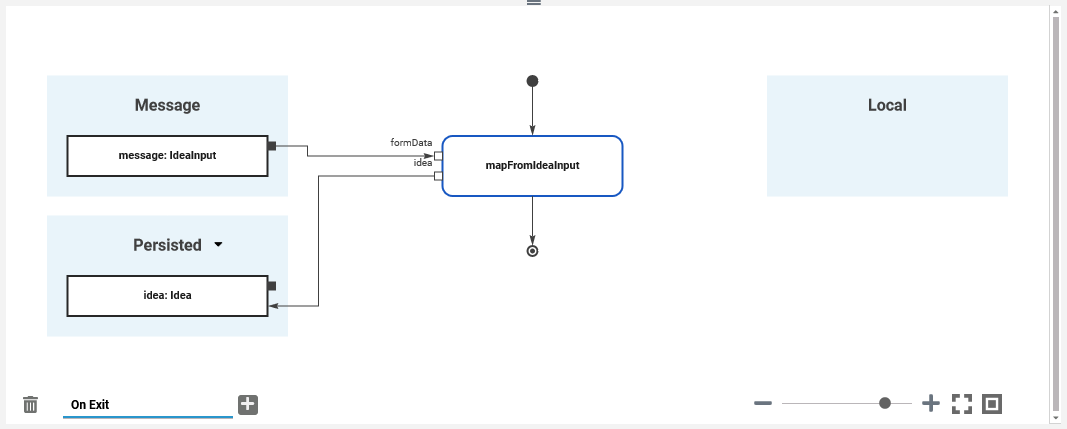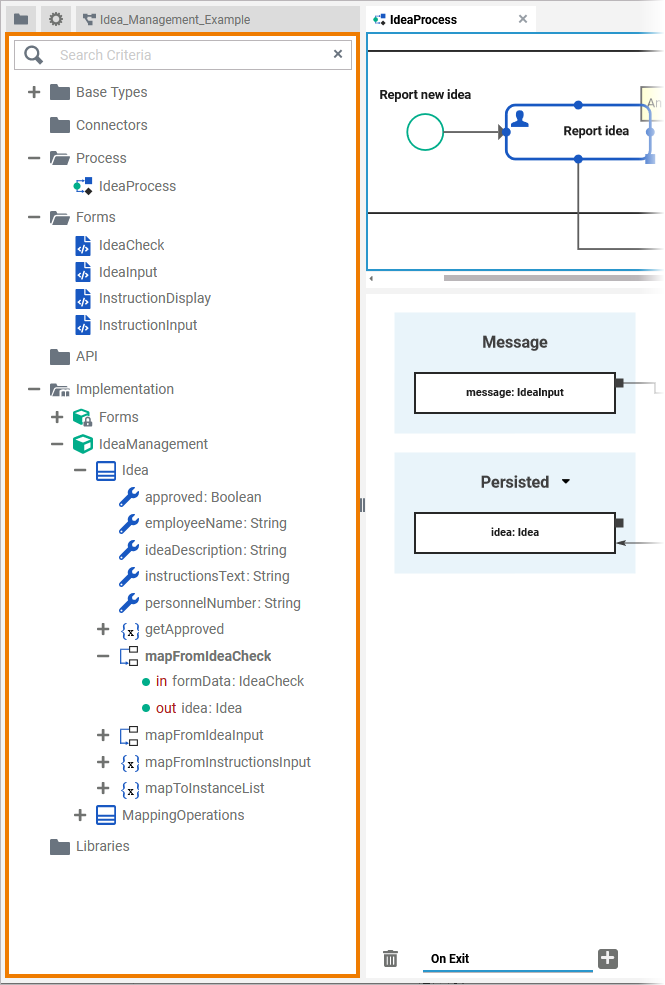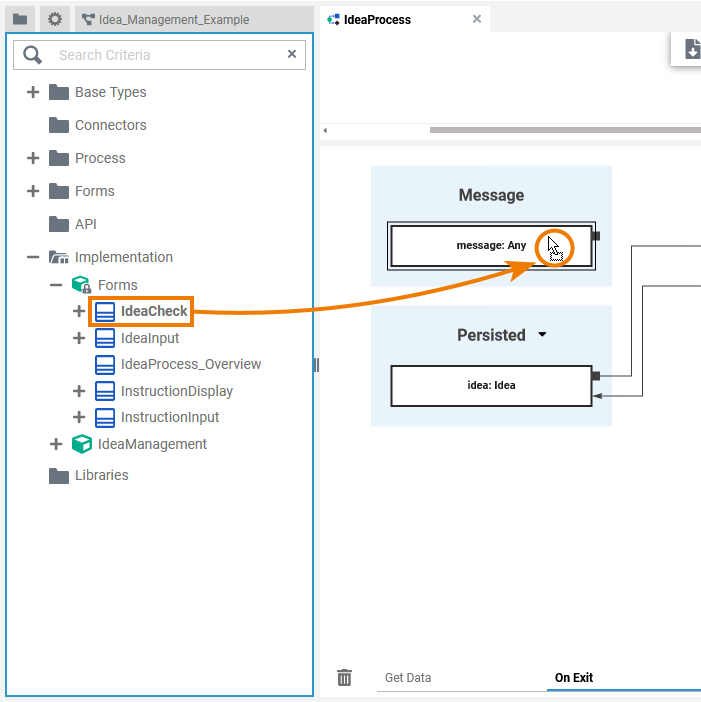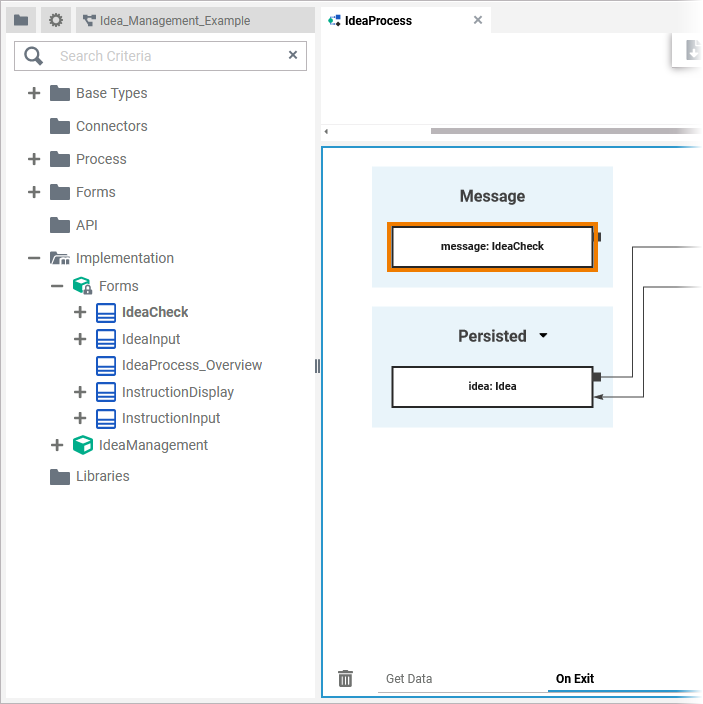Versions Compared
Key
- This line was added.
- This line was removed.
- Formatting was changed.
Adding Objects to the Execution Canvas
| Multiexcerpt include | ||||||||
|---|---|---|---|---|---|---|---|---|
|
Select BPMN Element
| To add an execution object, you must first select the element on the BPMN canvas to which you want to add the object. | |||||||||||
| The related execution part will be displayed in the execution canvas. As no execution has been implemented yet, the panel shows an empty UML diagram. | ||||||||||
If the selected BPMN element is a Message Start Event, the execution canvas also shows section Message with an incoming message object of type Any.
| |||||||||||
| If you have selected the outgoing relation of an Exclusive Gateway, section Return is displayed, containing the unchangeable object return of type Boolean. |
Select Type
| Now go to the Library panel and expand the library you want to use.
| ||||||||||
|
Drag to Execution Canvas
Adding objects to the execution canvas is simple:
There are different targets to drop an object to:
| |||||||
You can cancel the operation by pressing Esc or dropping the element outside the execution canvas.
|
Adding a New Object
You can add a new object by dropping it in section Persisted or Local.
| |||||||||||||||||
| This applies to objects from your own customized libraries as well as to the Bridge base types. | |||||||||||||||||
| |||||||||||||||||
|
Changing the Object Type
| You can change the type of any object if you drag a type from your library and drop it on the object itself. Example: | |||||
| After you have dropped the type on the object, it has changed its type. Example: | |||||
| ||||||
| Object message cannot be of simple type. If you try to drop a simple type other than default type Any on the message element, a red frame indicates that this is prohibited. |
Changing the Section
It is also possible to change the section for an object. You can drag&drop objects:
- From Local to Persisted
- From Persisted to Local
- From Message to Persisted or Local
|
|
|
|
|
|
Special Case: Adding Persisted Objects
| Tip |
|---|
For detailed information see page Persisting Data. |
| If you add objects to section Persisted, they are usable in all executions of the BPMN model. | ||||||||
To use a persisted object, click the icon | |||||||||
| |||||||||
|








